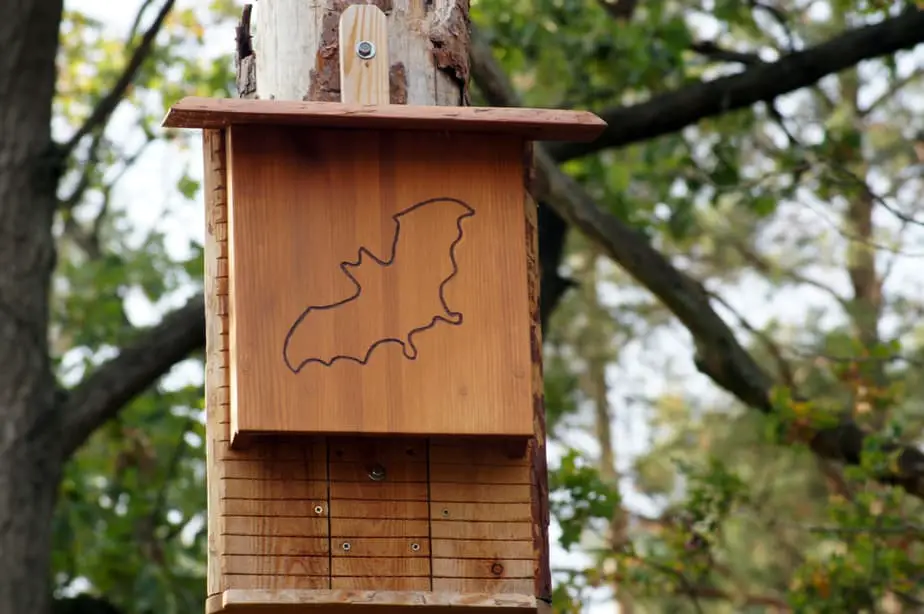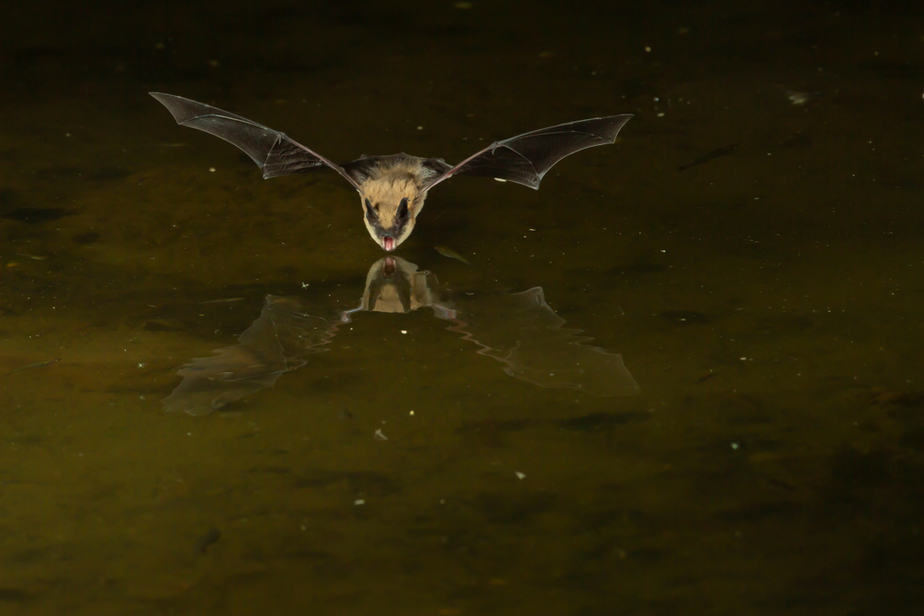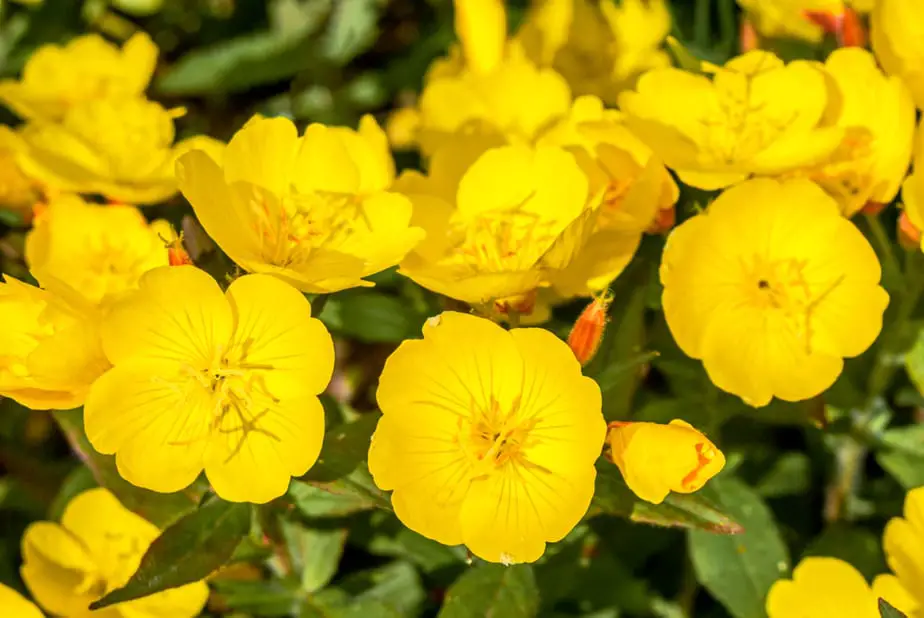When looking to keep pests under control, you want to keep the ecosystem in your backyard as healthy and natural as possible. Insecticides are often made up of harmful chemicals that can leach into the environment, waterways, and disrupt wildlife. Luckily, there’s another way to lessen the number of pests in your yard without the drawbacks of chemical solutions – bats for pest control.

In this article, we’ll explain the importance of bats, what pests they can help rid your yard of, and how to attract them to your backyard to begin the natural process of pest removal.
Table of Contents
Pests Consumed by Bats
Before we get into the “how” and “why” to use bats for pest control, let’s go over the types of pests generally consumed by bat species:
- Mosquitoes
- Moths
- Beetles
Though the above are the most common insects that bats eat (and that bug us the most – pun intended), bats will also eat a variety of other insects, as well. Such as:
- Hornworms
- Earworms
- Grasshoppers
- Stink bugs
Why Use Bats for Pest Control?
To expand on the previously mentioned reason of bats being a natural and beneficial member of ecosystems everywhere, let’s take a look at why you should use bats for pest control if the opportunity presents itself.
Firstly, bats eat a lot of insects. And by “a lot”, we mean a lot. A single little brown bat can consume approximately 500 to 1,000 mosquitoes or mosquito-sized bugs in a single hour. And every night, they’ll scarf down between 6,000 and 8,000 bugs in total. If you get enough bats in your area, you’ll have more pests killed off in a single hour than a bug zapper would accomplish in days or weeks.
Secondly, you’ll be helping a greater cause. Due to the heavy use of insecticides and the cultivation of their natural habitats, bats are declining in numbers and are out of homes. By creating a bat-friendly yard and encouraging them to feast on your mosquitoes, you’ll be giving them a place to live, hunt, and build their population.
Lastly, some bats are excellent pollinators. So not only will you be getting rid of your mosquito problem and giving bats a place to call home, but you may very well be inviting additional pollination to your flower beds and to the natural flora around your home.
That’s a win-win-win in our book.
How to Attract Bats
Now that we’ve given you the top reasons why you should invite bats to your yard, in this section, we’ll be giving you some pointers on how to go about doing just that.
Your yard has to be adjusted to meet the needs of bats in your area. This includes shelter, sufficient food sources, and availability of a water source. Let’s go over each of these individually in more depth:
Bat Boxes

Bat boxes are artificial homes made especially for bats. Like birdhouses, bat boxes provide a cozy, enclosed area protected from the rain and outdoor elements for bats to dwell in. They’re generally made out of wood, but can also be found to be made with plastics and metals.
They’re best when made out of dark wood or when painted black (with non-toxic paint). This will ensure that they absorb enough warmth from the sun during the day to give bats a preferred living temperature.
Be sure to hang your bat boxes 10 to 15 feet above the ground on poles, trees, or buildings, and like we mentioned above, in a place that gets a good amount of sunlight during the day.
These bat boxes can usually house at least a dozen of small bats at once, giving them a nice alternative to using your attic as a host. And don’t worry if you don’t begin to see bats as soon as you put your bat house out. It may take a couple of seasons for them to find their new home.
You can build your own National Wildlife Federation-approved bat box, or select a bat box from the variety of options available on Amazon.com.
The following bat box is by far our favorite:
- Safe and Warm Bat Shelter - Help preserve the bat population by installing an Applewood Outdoor Bat House on your property. This wood bat shelter has grooved narrow interiors for optimal heat retention and provides a safe haven for outdoor bats to roost and live comfortably.
- Solidly Built for the Outdoors - Our bat houses offer a sturdy and lasting home for your flying bat neighbors. Each bat house is made of premium, high-grade pine wood with solid construction. This weather-resistant wood shelter can withstand harsh outdoor elements.
- Pre-Finished and Ready for Use - Bat ecologists and conservationists recommend a dark-stained bat house in most US areas to better attract bats. Our bat house kit comes pre-finished, pre-assembled and ready for installation to save you the trouble.
- Easy Installation - Setting up your bat roost house is effortless. Each pre built tiny house for these furry flyers has pre-drilled mounting holes and includes three 2 ½ inch screws. The kit also includes an instruction guide for installing the bat house on your house, a tree or a pole.
- Excellent Craftsmanship - All our bat house kits are handcrafted in our woodworking shop in the Upper Midwest. We use quality, US-sourced materials in our bat boxes for outside to ensure you get superior products built to last.
Last update on 2025-03-28 / Affiliate links / Images from Amazon Product Advertising API
Sufficient Water Source

In the wild, you’ll usually find bats gathered collectively by water sources, such as in caves located next to lakes. When attempting to attract bats to your property, be sure to have an accessible water source nearby, whether it be in the form of a fountain birdbath, a pond or water garden, or a man-made waterfall and stream.
If you opt for the manmade birdbath or waterfall option, be sure that the water doesn’t have any added, unnecessary chemicals in it. The more natural and uncorrupted your backyard is, the better it is for our little bat friends.
Plant Night-Scented Flora

Aromatic plants such as the Evening Primrose (shown above), Petunias, and Honeysuckles are great for attracting moths to your garden, which in turn, attracts bats as they hunt down their natural food source.
Essentially what you’re doing by planting scented flowers is encouraging a balanced ecosystem that is welcoming to bats. This is great news for a large variety of bat species, and great news for your mosquito problem.
Final Thoughts
If you’re someone who loves nature and loves keeping it clean and chemical-free, using bats for pest control is a no-brainer. Bats play a vital role in local ecosystems as they help to keep bug populations under control and aid in some pollination. Adding a bat box (or a few) to your property will give bats a place to stay during a time when their natural habitats are dwindling.
We hope we were able to give you some insight into why bats are so important and how they can help you keep your yard pest-free!
